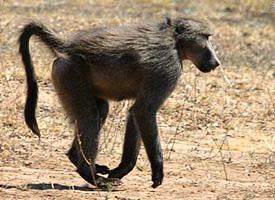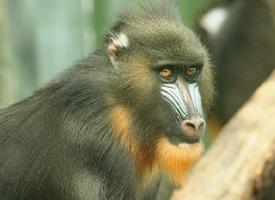
Súlyok és méretek
| Hossz | 45-tól 67-ig cm |
|---|---|
| Súly | 11,3 kg |
| Farokhossz | 50-tól 85-ig cm |
Veszélyeztetettség
| Veszélyeztetett |
Állatleírás
The Western red colobus, scientifically known as Piliocolobus badius, is a captivating species of Old World monkey found primarily in the lush forests of West Africa. This species is part of the Colobinae subfamily, which is distinguished by its members' unique adaptations for a folivorous diet, primarily consisting of leaves. The Western red colobus exhibits several intriguing characteristics and behaviors that make it a subject of interest among conservationists and primatologists.Physically, the Western red colobus is a medium-sized primate with a distinctive appearance. One of its most striking features is its coat color, which ranges from a deep, rusty red to maroon, with variations depending on the individual's age and geographic location. The face is framed by white or grey fur, which contrasts sharply with its darker body fur. This primate's long tail, which is often as long as or longer than its body, helps it balance as it moves through the canopy, making it an adept arboreal navigator.
The limbs of the Western red colobus are adapted for a life spent mostly in the trees. Its hands and feet are long and strong, with opposable thumbs that are reduced in size, a common trait among colobus monkeys. This adaptation aids in grasping branches and leaves, its primary food source. The teeth of the Western red colobus are also specialized for its herbivorous diet, with complex stomachs that facilitate the digestion of tough, fibrous plant material.
Socially, the Western red colobus lives in groups typically ranging from a dozen to over eighty individuals, though the size can vary greatly. These groups are often multi-male, multi-female societies, with a complex social structure that includes both hierarchical and cooperative elements. Communication within the group is key to its survival, and the Western red colobus uses a variety of vocalizations, body postures, and facial expressions to convey information about food sources, predators, and social relationships.
The reproductive system of the Western red colobus is characterized by a polygynous mating system, where dominant males have breeding rights to multiple females within the group. Females give birth to a single offspring after a gestation period of about five to six months. The young are cared for not only by their mothers but also by other females in the group, a behavior known as alloparenting, which strengthens social bonds within the group.
Despite its fascinating ecology and behavior, the Western red colobus is facing significant threats from human activities. Habitat destruction due to logging, agriculture, and urban expansion is dramatically reducing its living space. Additionally, hunting for bushmeat and the pet trade are contributing to a rapid decline in its population. As a result, the Western red colobus is currently classified as Endangered by the International Union for Conservation of Nature (IUCN), highlighting the urgent need for conservation efforts to protect this unique primate and its habitat.
Conservation initiatives are crucial to the survival of the Western red colobus and include habitat protection, anti-poaching efforts, and public education campaigns to raise awareness about the species and its plight. By understanding and appreciating the value of the Western red colobus and its role in the ecosystem, there is hope that this remarkable primate can be preserved for future generations to admire and study.
Hasonló állatok
Új állatfotók
Top 10 állat
- Dolphin gull (Leucophaeus scoresbii)
- Japanese macaque (Macaca fuscata)
- Stone loach (Barbatula barbatula)
- Russian tortoise (Testudo horsfieldii)
- Galápagos tortoise (Geochelone nigra complex)
- Greek tortoise (Testudo graeca)
- Diana monkey (Cercopithecus diana)
- Common flying dragon (Draco volans)
- Moustached guenon (Cercopithecus cephus)
- Galápagos penguin (Spheniscus mendiculus)


